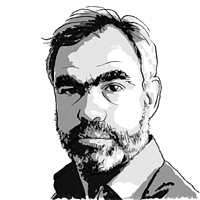Can BRICS development bank become a rival to the World Bank?
Loading...
| Beijing
China and four other emerging market nations are setting up their own development bank and currency reserve to challenge the Western-dominated international financial system.
Frustrated by the failure of the World Bank and International Monetary Fund to give them a bigger say, the five BRICS nations launched a $50 billion bank to fund infrastructure projects and a $100 billion money pool to help members cope with liquidity crises.
The bank, to be headquartered in Shanghai, marks the first major agreement between Brazil, Russia, India, China, and South Africa, who in aggregate account for a quarter of global economic output.
The New Development Bank, due to start making loans in 2016, shows developing countries “flexing their muscles” and providing “healthy competition” to the World Bank and IMF, widely seen as insensitive to poorer countries’ priorities, says Stephany Griffith-Jones, an international finance expert at Columbia University in New York.
In a rebuff to Beijing’s efforts over two years of negotiations to win a dominant position for China in the new bank, BRICS leaders announced Tuesday at their summit in Fortaleza, Brazil, that all five countries would contribute equally to capitalizing the bank.
“This is not a hegemony,” Brazilian president Dilma Rousseff told reporters, explaining that an Indian will be the first to occupy the bank’s rotating presidency. It will be at least 15 years before China holds the top post.
China did persuade Brazil and India to locate the bank’s headquarters in Shanghai. “Shanghai is a financial center, an international city, and China has a lot of experience in building infrastructure, which is what the new bank is mainly for,” says Zhu Jiejin, who teaches at the Center for BRICS Studies at Fudan University in Shanghai.
Beijing will have more clout in the currency reserve, to which it will contribute $41 billion of the $100 billion total. South Africa will put in five billion dollars and the other three countries $18 billion each. The fund will cushion the sort of balance of payments crises that developing countries might face in the event of rising US interest rates that would likely trigger capital outflows from emerging markets.
China isn't likely to get caught short: It has nearly $4 trillion in foreign currency reserves.
Developing countries complain that IMF emergency loans often come with harsh austerity measures that are politically risky and not always appropriate. The New Development Bank is expected to be more understanding of its clients’ concerns.
The BRICS leaders said they were “disappointed and seriously concerned” that the IMF had not implemented governance reforms, agreed in 2010, to better reflect the increasing economic weight of emerging market countries. The US Congress has refused to ratify those reforms.
The new bank may eventually be able to lend $34 billion a year by 2036, provided that it is adequately capitalized, according to a United Nations report published in March and authored by Prof. Griffith-Jones.
Though that would come nowhere near bridging the one trillion dollar annual shortfall in infrastructure investment in developing countries that the World Bank estimates, “it would be a start,” says Zhu.
“At any rate one thing is certain,” he adds. “We now have more choice for infrastructure financing, not just the World Bank.”
Stephen Kurczy contributed reporting from Fortaleza, Brazil.







